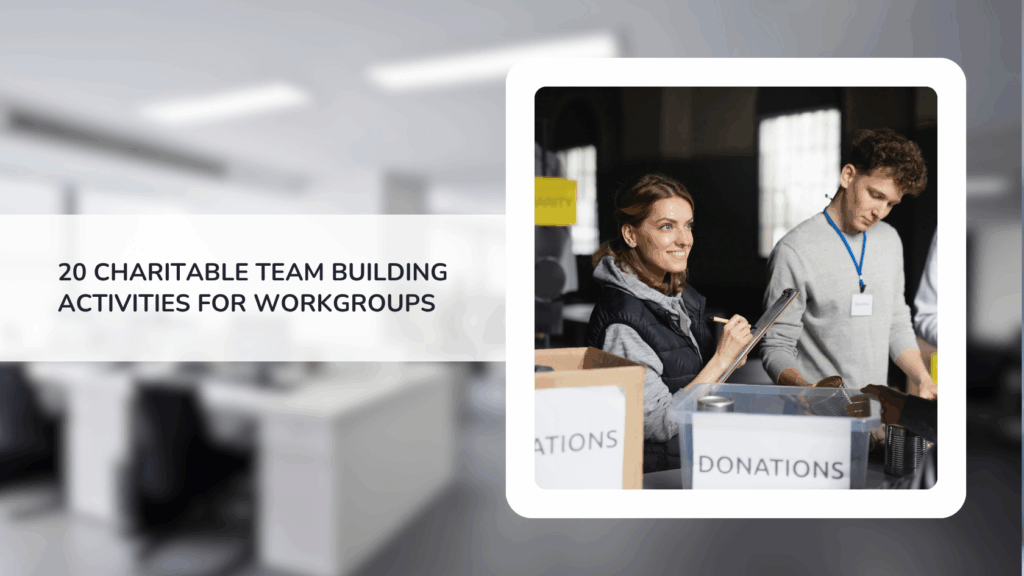You hear the same song on repeat—employee disengagement—for which year in a row?
Gallup laid bare the fact that 85% of employees worldwide are either not fully engaged or actively disengaged in the workplace. Then, The Conference Board struck business leaders and HR managers with an alarming thunderbolt—a confession from workers. Roughly two-thirds (30%) acknowledge their engagement levels have dropped recently.
Your employees may likewise be detached from work and colleagues. Some may be idly scrolling through their tasks, while others stare blankly at their screensavers or constantly glance at their watches and wait for the workday to end. Some may even be considering leaving your company…You’d undoubtedly want to figure out the reasons and pick the right tactics to improve employee engagement. And you can do that. But only with a clear action plan to engage your employees. That’s what we’re going to help you develop today.
- What Is an Employee Engagement Action Plan?
- How to Design an Action Plan for Employee Engagement
- Step #1. Run an employee engagement survey
- Step #2. Define the main focus areas that need improvement
- Step #3. Spitball employee engagement ideas
- Step #4. Start implementing and establishing communication across departments
- Step #5. Pay extra attention to remote employees
- Step #6. Monitor progress consistently and pivot your strategies
- Bonus: 3 Employee Engagement Action Plan Templates
- Author Bio
What Is an Employee Engagement Action Plan?
An action plan for employee engagement is a set of strategic moves and activities to create an environment where the staff feels valued, motivated, and committed to the job and the company. It generally relies on the results of employee feedback surveys and assessments.
The commonplace elements in employee engagement action planning are as follows:
- Identified issues and root causes (e.g., remote leadership fails)
- Potential solutions
- Tasks and actions
- Task owners (roles and responsibilities)
- Timeline
Here’s how it may look on paper. Below is an example of the employee engagement action plan developed by The Countess of Chester Hospital NHS Foundation.

We know what you’re thinking. It looks rather complicated at first glance. But no worries. It’s only a possible variant. Let us explain how to approach it with confidence and ease.
By the end of this article, you’ll have a comprehensive scheme outlining how to engage your workers. Plus, we’ve pulled out some templates from the e-spaces to grease the wheels for you on the path to unprecedented employee engagement levels. Wait for those!
How to Design an Action Plan for Employee Engagement
Step #1. Run an employee engagement survey
How engaged are your workers at this moment?
Before planning anything, the first step is to measure employee engagement in your team. With the right tools, you can automatically send employee engagement surveys and collect results.
Pick one of these:
- Q12 tool by Gallup
- Leapsome
- Qualtrics
- CultureMonkey
- Haiilo
- Trakstar
- Talos360
- SurveySparrow
As an alternative, use the employee engagement survey template created by the Outback team.

You can remove or add sections and modify them based on your company’s needs. For example, include more employee well-being survey questions about stress or burnout. Such problems provoke severe disengagement in teams.
Step #2. Define the main focus areas that need improvement
Now that you’ve captured the results, it’s perfect timing for a thorough analysis and prioritization.
Ian Sells, CEO at Million Dollar Sellers, advises recognizing the highest-priority problems first. He says, “It’s like you tell your employees, I hear you and understand your most pressing needs and concerns; we’re going to work on those together. Besides, setting the right priorities helps you make wiser decisions in terms of allocating resources (time, budget, and personnel) on employee engagement initiatives to amplify gains.”
The major targets in your employee engagement action plan may be as follows:
- Company culture and values
- Open and honest communication
- Leadership and management development
- Diversity and inclusion
- Employee appreciation
- Health and well-being
- Training and development
For example:
The San Francisco Public Defender’s Office saw the need for a more diverse and equitable workplace and created a Racial Equity Action Plan to confront racial disparities and tackle the challenges associated with them.

Or let’s say your focus area is employee health and wellness. In that case, you may need to put effort into planning wellness programs, self-care techniques, and work-life balance practices to improve employees’ well-being in the workplace.
Step #3. Spitball employee engagement ideas
At this point, you need to make a list of the best employee engagement ideas for your remote or in-office team. Conduct a brainstorming session with your teammates and generate them together.
Let’s explore a few potential solutions.
Team-building activities
When was the last time you engaged employees in a team-building activity?
You can incorporate different team-building events into your employee engagement action plan. These can be:
- On-site or off-site team-building ideas
- Teamwork-oriented, communication-focused, or problem-solving team-building types
- Remote team-building events
- Team-building planning for small or large groups
- Charitable team-building activities, etc.
You’re in the driver’s seat to decide. But don’t forget to listen to your passengers (your employees). What type of activity do they prefer the most?
For example:
Kickstart Seed Fund is a standout case study to learn from. The firm engaged a group of 110 CEOs in a philanthropic off-site event, a Charity Bike Buildathon, organized by the Outback team.

Rewards and recognition ideas
Consider different employee recognition platforms and software that can help you offer bonuses and perks to your staff:
- Perkbox
- Motivosity
- EachPerson
- Mo.Work
- Bonusly, etc.
Of course, it would be best to personalize recognition and rewards by adapting them to your employees’ interests.
Social media engagement ideas
Tim White, Founder of milepro, fairly remarks, “Your team members likely spend significant time on social media. So, why not interact with them there? It can be an employee spotlight, shout-out, or even a like or comment under your employee’s social media post.”
For example:
Checkr spotlights new hires and publishes apprenticeship stories on YouTube and LinkedIn.

Step #4. Start implementing and establishing communication across departments
“Cross-departmental communication is an indispensable element to wind up your action plan for employee engagement. Your teams shouldn’t feel as if they were working on different planets. It’s necessary to engage employees from different departments in common activities to foster better understanding and trust between teams,” recommends Brooke Webber, Head of Marketing at Ninja Patches.
For example:
When creating promotional videos and behind-the-scenes for social media, Ninja’s marketers never leave any department unnoticed, whether a design or sales team.

Another way to achieve that is by uniting employees from different teams in company-wide celebrations or team-building events.
For example:
Outback helped DemandJump overcome interdepartmental barriers in communication and collaboration and get to know each other better through a virtually hosted Wild Goose Chase.
Step #5. Pay extra attention to remote employees
As a remote-first business leader, Phil Strazzulla, Founder of SelectSoftware Reviews, understands all the challenges of managing and engaging remote teams. He says, “If you want to create an effective action plan for employee engagement, you should remember that remote workers require extra care and greater focus. They may feel isolated, unnoticed, or undervalued due to an asynchronous work environment and a lack of face-to-face communication.”
He also suggests a couple of tools to help you better engage remote employees:
- For onboarding → HiBob, Wranx
- For communication → Slack, Chanty
- For collaboration on projects →Asana, Monday.com
- For virtual meetings → Zoom, Microsoft Teams
For example:
Phil Strazzulla often joins team conversations via Slack or initiates them to break down the virtual walls between remote employees.

Here’s another example of how online training helped build a stronger emotional connection and unity in a remote team. Working hundreds of miles away from each other, nearly 20 remote workers and contractors from Principia strengthened their company culture with emotional intelligence training.
Step #6. Monitor progress consistently and pivot your strategies
Do your employee engagement strategies actually work?
You’ll never know that without thorough analytics and progress monitoring.
Grant Aldrich, Founder of Preppy, “You must keep a beady eye on the success of your employee engagement initiatives. Remember to run regular follow-up surveys, revise your methods, and fine-tune your strategies to engage your employees more proactively and efficiently in the future.”
Let’s delve into the case of Coca-Cola. The company runs an annual feedback survey called The Pulse and reevaluates employee engagement approaches every year based on its results. For instance, heading into 2024, Coca-Cola drew two main pillars for HR’s focus. Pillar #1: Training programs for continuing employee education and career development. Pillar #2: Automation of manual tasks.
Bonus: 3 Employee Engagement Action Plan Templates
Use one of these handy tools to arrange all facets of employee engagement in a concise layout, address them with practical solutions, and drive meaningful change in your organization.
Employee Engagement Action Plan Template from Creately

Employee Engagement Action Plan Example via ClickUp

Employee Engagement Action Plan Template at SketchBubble

And Lastly…
Action planning for employee engagement isn’t a one-time shot; it should be an ongoing process of refilling your tank of strategies and methods. It also requires whole-team dedication.
If you still have doubts or concerns, join an Active Employee Engagement program run by Outback to develop all the tactics you need to engage your teammates like never before. You will have a ready-made employee engagement action plan in just a few hours.
Contact Outback for more details!
Author Bio
Catherine Schwartz is an author who specializes in employee well-being and engagement.



